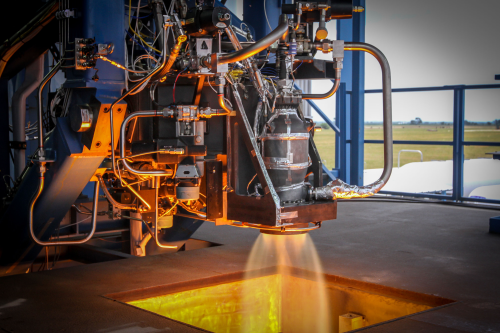
By Liz Nickels
The SuperDraco engine chamber is manufactured using direct metal laser sintering (DMLS), using Inconel, a high-performance superalloy that offers both high strength and toughness for increased reliability.
The SuperDraco is an improved version of the Draco engines currently used by SpaceX’s Dragon spacecraft to manoeuvre in orbit and during re-entry. SuperDracos will be used on the crew version of the Dragon spacecraft as part of the vehicle’s launch escape system and will also enable propulsive landing on land. Each SuperDraco produces 16,000 pounds of thrust and can be restarted multiple times if necessary. Eight SuperDraco engines built into the side walls of the Dragon spacecraft will produce up to 120,000 pounds of axial thrust to carry astronauts to safety should an emergency occur during launch.
“Through 3D printing, robust and high-performing engine parts can be created at a fraction of the cost and time of traditional manufacturing methods,” said Elon Musk, chief designer and CEO. “SpaceX is pushing the boundaries of what additive manufacturing can do in the 21st century, ultimately making our vehicles more efficient, reliable and robust than ever before.”
NASA test
The first flight demonstration of the SuperDraco will be part of the upcoming pad abort test under NASA’s Commercial Crew Integrated Capabilities (CCiCap) initiative. The pad abort will be the first test of SpaceX’s new launch escape system and is currently expected to take place later in 2014.
The qualification testing program took place at SpaceX’s Rocket Development Facility in McGregor, Texas. The programme included testing across a variety of conditions including multiple starts, extended firing durations and extreme off-nominal propellant flow and temperatures.





